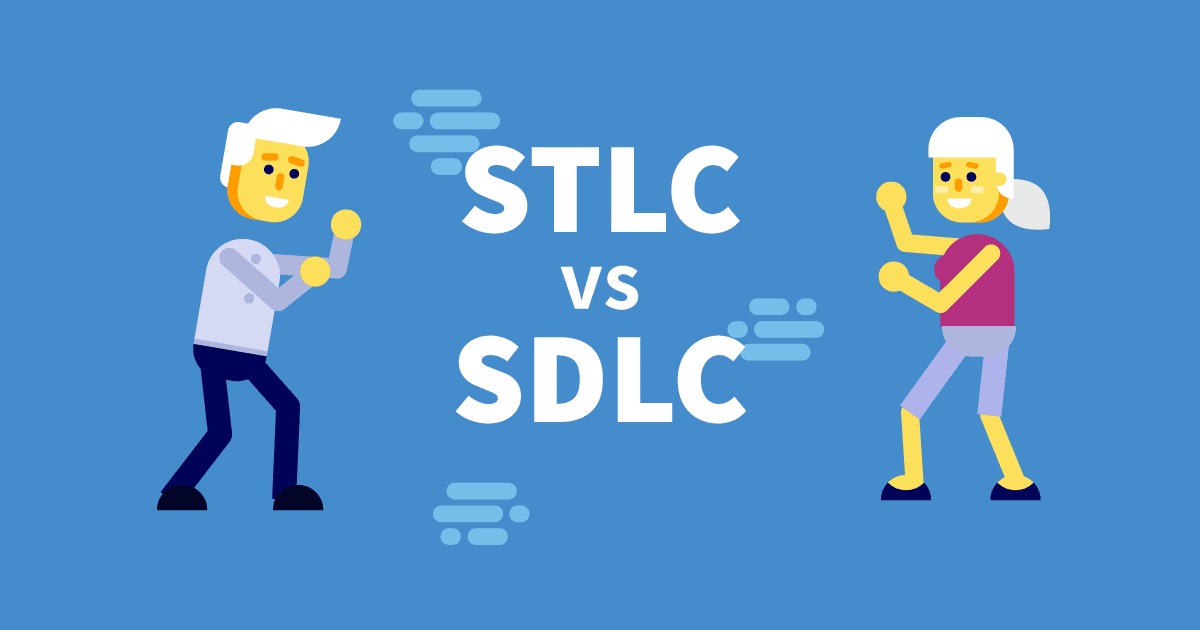It is not uncommon for people interested in software testing to ask about SDLC vs. STLC and wonder if they are complementary or opposite, independent or separate. In this post, we will explain their differences and similarities, but first, let's take a quick look at the development of new software.
During the development of an application or software, a team of people are required to perform a series of different roles at different stages. For a tester to understand how their involvement and responsibilities fit into the full scheme of software development, it’s useful to understand the flow of the whole process from ideation, to development, through to maintenance. The process that outlines these steps is known as the Software Development Life Cycle (SDLC).
While SDLC defines processes related to an application’s development, STLC (Software Testing Life Cycle) concerns how QA tests the application. SDLC and STLC together can help not only developers and testers to understand the entire development and software testing cycle but anyone who is associated with the software, including customers.
SDLC vs. STLC: What are the differences and similarities?
The software life cycle consists of different phases, where each indicates the different types of activity that take place from the planning stage to implementation.
The phases of SDLC include:
- Planning
- Analysis
- Design
- Implementation
- Testing
- Deployment
- Maintenance
Similarly, the phases involved in STLC include:
- Requirement Analysis
- Test Planning
- Test Design
- Test Environment
- Test Execution
- Test Closure
For a deeper look into STLC, read The Software Testing Life Cycle.
How does SDLC fit with STLC?
A common inquiry amongst testers is about when STLC takes place and is it a part of SDLC? As we have seen, testing is a vital phase in SDLC, and STLC is just a framework for defining the tasks performed during testing, so STLC is a subset of SDLC.
During project development, the team may decide to follow different models. These can vary from waterfall, iterative, or Agile, but whatever the model, development and testing activity begin in parallel. Therefore, SDLC and STLC run in parallel.

More about Development and the Testing Life Cycle
Everything starts when a customer or the client decides to convert an idea into a software product. The customers receive proposals from potential vendors, which they assess before settling on the one that suits their needs and budget.
The next step marks the Planning phase of the SDLC, where the customer and developers meet to plan the high-level requirements, discuss system feasibility, and sketch out a rough project plan.
Next, during the Analysis phase, the developers and testers meet the customers to define the detailed requirements, which are then analyzed. The STLC kicks off here since this marks the beginning of phase1 of STLC, Requirement Analysis. Although both development and testers meet together to perform the analysis, the objective of both teams varies. Development analyze the requirement so they can prepare the architecture, process diagrams, and so on, and the testers conduct requirement analysis so they can design test cases.
The third phase of SDLC is the Design phase, where the developers create the architecture, design the UI/UX, establish database relationships, finalize the programming language, and more. These designs are shared with testers for review and feedback. As said earlier, this is phase three in SDLC, but in STLC, the analysis of design is a part of phase one and called Requirement Analysis.
While the development continues on coding and implementation, the testers in parallel may work on other STLC phases such as Test Planning, Test Design, and Test Environment setup.
Next comes Implementation, which is the coding phase, where each feature or requirement is realized, and development takes place. Next, the developed piece of code is released to QA.
The Test Execution is dependent on the Testing phase of SDLC. During this phase, testing by both development and QA takes place. All the test-related tasks like defect logging, bug retesting, and QA sign-off, occur during the Testing phase of SDLC.
Providing test results and other reports is part of the final STLC phase, Test Closure, which counts as part of the Testing phase of SDLC.
Once the software has tested successfully, it is then ready for Deployment, the sixth phase of SDLC. In deployment, the code is moved and actualized in the production environment. The system is then prepared for end-user use.
The software development life cycle doesn’t end here, because after deployment, there is the support and warranty, and having to take care of maintenance if required. Usually, a particular window of maybe 90 days or six months is allocated as the maintenance window, where development can address any production issues or necessary changes. The support given once the product has gone live is the final SDLC phase, Maintenance.
Conclusion
Well-written guidelines or instructions will help any development. Similarly, SDLC and STLC offer a welcome structure to the development and testing of software. Testers may feel that SDLC is relevant to developers only, but as has been shown by the entire development and testing life cycle described above, we can see that both activities are interdependent and are sometimes executed in parallel. Therefore, having an understanding of the SDLC phase with STLC, is beneficial, even to testers.